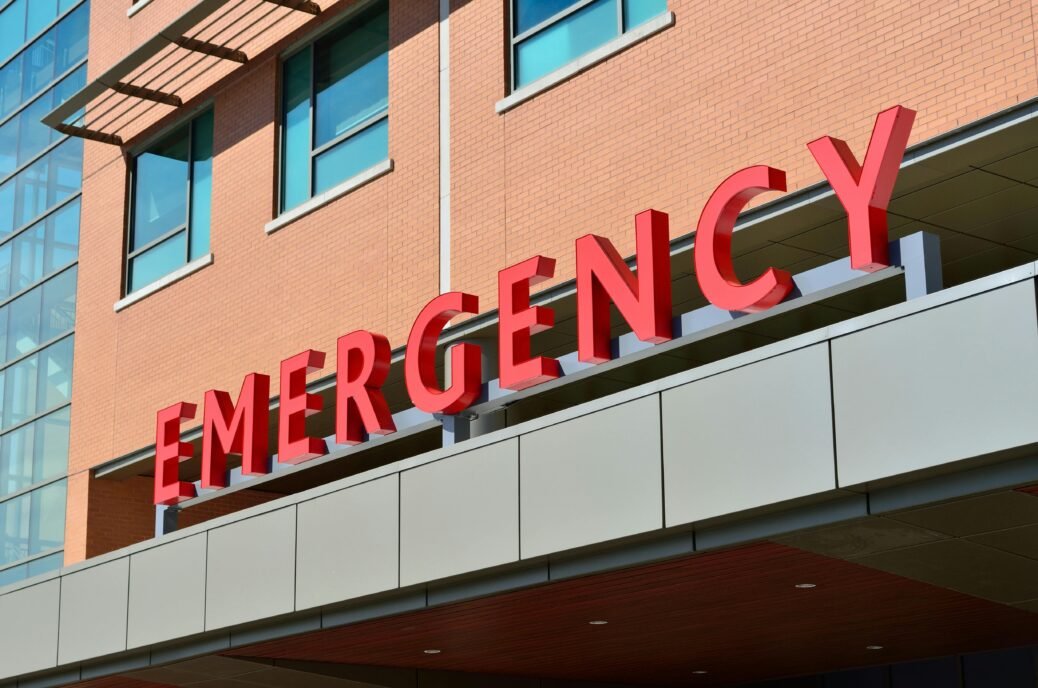What does coded means in hospital
When I first heard the term “code blue” in a hospital, I wasn’t quite sure what it meant, so I did some research to find out. It turns out that a code blue is a hospital emergency code used to describe a patient who has gone into cardiac arrest or is having respiratory problems. A team of medical professionals will then quickly respond to the location of the patient in an effort to save their life. It is important to understand these codes, especially if you or a loved one is a hospital patient.
In a code blue situation, healthcare providers will perform cardiopulmonary resuscitation (CPR) on the patient to manually pump their heart and assist with breathing. This life-saving procedure can help maintain blood flow to the vital organs until further medical assistance arrives. Cardiac arrest occurs when the heart stops beating suddenly, often due to an irregular heartbeat known as an arrhythmia. It can potentially lead to brain damage or death if not treated promptly, which is why immediate intervention through a code blue is so vital.
Hospitals have various color-coded emergency codes that help streamline their response to different situations. For example, “code pink” refers to a pediatric emergency, while “code red” signifies a fire or smoke-related emergency. Understanding these codes allows hospital staff, patients, and visitors to remain informed and appropriately respond when a code is called.
Understanding Hospital Codes

Code Blue
When someone is said to have “coded” in a hospital, it usually refers to a Code Blue situation. Code Blue is called in medical facilities when an adult patient experiences a life-threatening emergency, such as cardiac arrest or respiratory failure. In these cases, a specialized team of healthcare professionals quickly assembles to provide urgent care and life-saving measures, such as Cardiopulmonary Resuscitation (CPR). Time is crucial in Code Blue situations, as every second counts for increasing the chances of survival and preventing severe brain damage.
Other Hospital Codes
Besides Code Blue, there are many other hospital emergency codes that exist to signal various emergencies. For instance, a “Code Pink” is called when a child is experiencing a medical emergency.
There are also codes denoting non-medical incidents. For example, hospitals may use “Code Green” for evacuation situations and “Code White” for violent behaviors or threats. A “Code Silver” can be initiated for an active shooter situation. These codes help medical teams respond rapidly and effectively to various scenarios and maintain a safe environment in healthcare facilities.
It’s important to know that the exact meaning of these codes may vary from hospital to hospital. However, the primary goal remains the same: to improve communication and ensure quick, coordinated responses in critical situations.
Code Blue Response

Activation
When a patient experiences a life-threatening medical emergency such as a cardiac arrest in the hospital, a code blue is called. During a code blue, hospital staff quickly activate the code blue team. This is an essential part of the emergency response, and it’s crucial for the team to be notified and respond as swiftly as possible. I must emphasize that time is of the essence when dealing with these situations, as every second can significantly impact the patient’s outcome.
Medical Team Actions
Upon activation of a code blue, the medical team springs into action with a set of critical tasks. First, they rush to the patient’s location to assess the situation and initiate CPR if necessary. The primary focus during a code blue is to restore the patient’s normal heart rhythm and ensure their vital signs are stable. To achieve this, the medical team performs a series of actions:
- Assess the patient: Check for responsiveness and pulse.
- Establish an airway: If the patient is not breathing, open the airway and provide oxygen.
- Begin chest compressions: If no pulse is detected, start CPR immediately. Keep in mind that chest compressions should be continuous and high-quality to increase the likelihood of resuscitation.
- Bring emergency equipment: The team retrieves the emergency cart or “crash cart” containing essential items such as a defibrillator, intubation equipment, and IV supplies.
- Administer medications: Depending on the patient’s condition, the team administers medications like epinephrine or antiarrhythmic drugs to support the heart function during resuscitation.
Throughout the entire code blue process, the medical team remains highly focused and works as a cohesive unit. Their ultimate goal is to save the patient’s life and provide the best possible care under such urgencies. As mentioned earlier, time is crucial, and the team’s prompt actions play a significant role in determining the outcome.
CPR in the Hospital Setting

CPR Procedure
In a hospital setting, when a patient experiences a cardiac arrest, a code blue is called, and a team of medical professionals swiftly responds to perform cardiopulmonary resuscitation (CPR). I’ve been trained in performing CPR, which involves several steps:
- Assess the situation: I quickly evaluate the safety of the environment and check for responsiveness of the patient.
- Call for help: I either call out for a code blue or use the hospital’s emergency notification system if no nearby help is available.
- Check for breathing and pulse: I then assess the patient’s airway, breathing, and circulation (ABCs) to confirm whether CPR is required.
- Begin chest compressions: If the patient’s heart has stopped, I perform chest compressions at a rate of 100-120 per minute, applying pressure to the center of the patient’s chest.
- Ventilation: While continuing compressions, I provide rescue breaths to supply vital oxygen for the patient. In a clinical setting, this often involves a bag-valve-mask for more efficient oxygen delivery.
Advanced Cardiac Life Support
In addition to standard CPR, hospitals implement Advanced Cardiac Life Support (ACLS) protocols to further assist patients. I have participated in situations where ACLS has been crucial in saving lives. Key elements of ACLS include:
- Teamwork: Working with a code blue team, we communicate effectively and efficiently to delegate responsibilities and share information throughout the resuscitation process.
- Medication administration: I often administer medications, such as epinephrine or amiodarone, to help restart the patient’s heart or manage their heart rhythm.
- Defibrillation: Using an Automated External Defibrillator (AED) or manual defibrillator, I deliver shocks in a timely manner to the patient to restore the normal heart rhythm.
- Post-resuscitation care: Once the patient’s pulse and breathing have returned, I shift focus to their ongoing care, including monitoring vital signs, checking for further complications, and treating any underlying conditions.
CPR and ACLS are essential components in hospital settings when responding to code blue emergencies. Through proper training, teamwork, and quick response, we can make a difference in patients’ lives during these critical moments.
Cardiac Arrest and Medical Intervention

When someone “codes” in a hospital, it typically means they are experiencing a cardiac arrest. The term “code blue” is used to describe this medical emergency, which occurs when the heart suddenly stops beating effectively, and blood flow to the body and vital organs is severely impaired 1.
During a code blue, medical professionals will promptly initiate Cardiopulmonary Resuscitation (CPR) as a crucial lifesaving intervention. CPR involves chest compressions, which help pump blood through the body, and rescue breaths, which provide oxygen to the victim 2. Timely CPR can significantly increase the chances of survival for cardiac arrest patients.
In hospital settings, the following steps are typically taken during a code blue response:
- Calling for help and activating the emergency response system.
- Administering high-quality CPR until advanced medical support arrives.
- Using an Automated External Defibrillator (AED) if available to deliver electrical shocks to the heart, which may restore a normal heart rhythm.
- Medical professionals will then manage and treat any reversible causes of cardiac arrest, such as electrolyte imbalance, drug overdose, or severe infection.
It’s worth noting that cardiac arrest differs from a heart attack, although they are interrelated events. A heart attack occurs when the blood supply to a section of the heart muscle is blocked, typically by a buildup of cholesterol and other substances. While heart attacks can lead to cardiac arrest, not all heart attacks result in them 3. Effective treatment and timely recognition of warning signs, such as chest pain, shortness of breath, and dizziness, can significantly reduce the risk of cardiac arrest.
In conclusion, understanding the meaning of code blue, cardiac arrest, and CPR is critical for both medical professionals and the general public. Timely intervention can save lives and prevent long-term health complications.
Footnotes
- What do code blue and other hospital codes mean? – Medical News Today ↩
- What Is a Code Blue? – WebMD ↩
- Hospital Code Blue: What It Means & Why It’s Called – Cleveland Clinic ↩
Post-Code Outcomes and Procedures
After a patient experiences a code blue situation in a hospital, there are several important steps that medical professionals take to assess the patient’s condition and ensure their well-being. I find that understanding these post-code procedures can provide valuable insight into the complexity of emergency medical care in such situations.
One of the first steps after a code blue is to stabilize the patient. This usually involves closely monitoring their vital signs, and providing support as needed. For example, should the individual require assistance with their breathing, the medical team may provide them with supplemental oxygen or place the person on a ventilator.
Next, it’s essential that a thorough medical evaluation takes place to determine the underlying cause of the cardiac arrest. This is critical because it helps physicians make informed decisions about the best course of treatment and ongoing care. Common diagnostic tests to identify underlying issues include:
- Electrocardiograms (ECGs) to examine heart activity.
- Blood tests to evaluate the patient’s chemical balance.
- Imaging studies such as x-rays, CT scans, or MRIs to look for structural abnormalities.
If a definitive cause is determined, relevant treatments or interventions may be implemented. For instance, an individual with a blocked artery may undergo a procedure like angioplasty to restore proper blood flow.
Another crucial aspect of post-code care is monitoring the patient’s neurological status. In some cases, a code blue event might lead to a lack of oxygen to the brain, which can cause significant damage. Ongoing neurological assessments help to identify and address potential complications early on, maximizing the chances of a full recovery.
Lastly, the medical team works on developing a tailored and comprehensive plan for the patient’s ongoing care. This plan takes into account their unique set of circumstances and needs, with the ultimate goal of facilitating the best possible recovery and preventing future cardiac events.
In summary, post-code outcomes and procedures in a hospital setting are intricately designed to provide patients with the best possible care following a life-threatening event. I find it reassuring to know that medical professionals possess the skills and resources needed to navigate such complex and urgent situations.
Frequently Asked Questions
What is the standard procedure during a ‘Code Blue’ emergency?
During a Code Blue emergency, the hospital’s rapid response team is activated, usually consisting of doctors, nurses, and other medical professionals who are trained in advanced cardiac life support. This team quickly reaches the location of the emergency, assesses the situation, and initiates resuscitation measures if required, such as administering CPR or using a defibrillator. The primary goal is to stabilize the patient’s vital signs and prevent further deterioration.
What are the implications when a patient is described to have ‘coded’ in the hospital?
When someone says a patient has “coded” in the hospital, it usually implies that the patient has experienced a cardiac or respiratory arrest, requiring immediate resuscitation efforts. A Code Blue situation is serious and potentially life-threatening, but it doesn’t directly mean death, as medical professionals are trained to perform life-saving measures during such an event.
How does a ‘Code Blue’ differ from other hospital emergency codes?
A Code Blue is specifically related to a patient experiencing a cardiac or respiratory arrest, whereas other hospital emergency codes denote different emergencies. For instance, Code Red indicates a fire or smoke situation, and Code Pink refers to a pediatric emergency. Each code helps hospital staff understand the type and urgency of the emergency for a quick and appropriate response.
What steps are included in administering CPR during a ‘Code Blue’ situation?
Administering CPR during a Code Blue event typically involves multiple steps, including:
- Assessing the patient’s responsiveness and airways
- Calling for help or alerting the Code Blue team
- Initiating chest compressions at a regular tempo to help maintain blood circulation
- Providing rescue breaths to ensure oxygen supply
- Adopting Advanced Cardiac Life Support (ACLS) measures, if required, such as defibrillation or administering medications
Can a patient survive after experiencing a ‘Code Blue’ event, and what factors influence this?
Yes, a patient can survive a Code Blue event, depending on various factors such as the timely initiation of resuscitation efforts, the underlying cause of the arrest, and the patient’s overall health status. The survival rate may also depend on skilled medical professionals working as a team to perform life-saving measures efficiently.
What specifically triggers the declaration of a ‘Code Blue’ in a hospital setting?
A Code Blue is declared in a hospital setting when a patient exhibits symptoms of cardiac or respiratory arrest, such as unresponsiveness, absence of a pulse, or cessation of breathing. These symptoms prompt the medical staff to initiate immediate resuscitation efforts, including CPR, to attempt to save the patient’s life. The Code Blue announcement generally includes a location, such as a floor number or department description like the intensive care unit (ICU).








